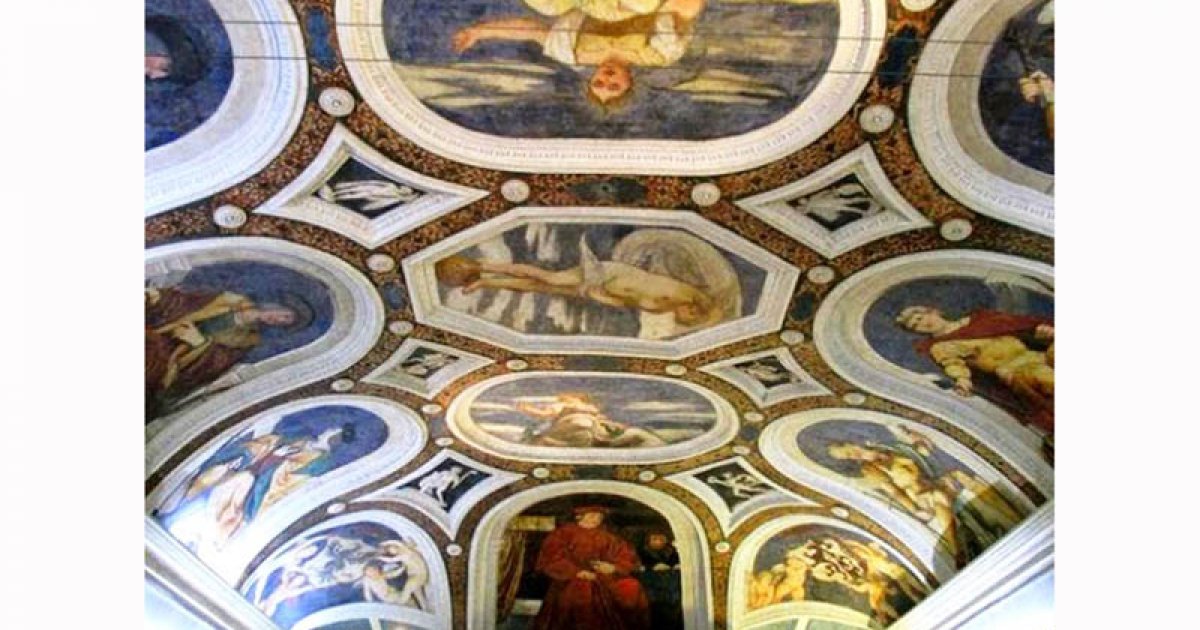BUONCONSIGLIO CASTLE, Magno Palazzo Audience Room
 Language: English / USA
Language: English / USA
To complete your visit to the Magno Palazzo, I suggest you take a look at two particularly delightful rooms. The first is the Sala delle Udienze, or Audience Room
“Welcoming the prince’s guests by highlighting the virtues of the host”: this is how we might describe today the function of the frescoes in this room, painted in 1531 by the artist from Brescia, Girolamo Romanino.
If you look up at the ceiling, you’ll see the portraits of the Roman emperors, a number of important rulers of the time, and of Bernardo Clesio. Like his predecessors, the bishop used painting to underline the strong links between the prince-bishopric of Trento and the Holy Roman Empire.
Once you’ve finished admiring this magnificent room, press pause and press play again when you reach the Courtyard of the Lions.
There’s more to the Magno Palazzo than exquisitely frescoed rooms, such as the splendid green of the Courtyard of the Lions, so-called because of a decorative fountain there used to be in the garden, of which only two creatures sculpted in stone remain.
The most beautiful element in the courtyard is undoubtedly the Loggia del Romanino, named after the artist who painted the frescoes on the ceiling between 1531 and 1532. What strikes the observer here is the audacious illusionistic effect, evident, for example, in the spectacular Sun Chariot in the center of the ceiling, and in the splendidly depicted scenes and their characters. Portrayed on the lunettes are an endless number of characters from the Bible, mythology and ancient history. Episodes such as the death of Cleopatra, the suicide of Lucretia or the killing of Holofernes by Judith alternate with less dramatic scenes, such as the courtship of a young woman, or a concert in the countryside. These incontestably beautiful images make the loggia one of the finest works of the artist from Brescia.
An interesting fact: among the myriad of figures portrayed by Romanino, particularly striking are the nudes, with clear reference to Michelangelo. Like the characters in the Last Judgement painted in the Sistine Chapel, the male figures here fell victim to censorship. Fortunately, the clothes they were covered with were removed during restoration work carried out in the 1980s.



